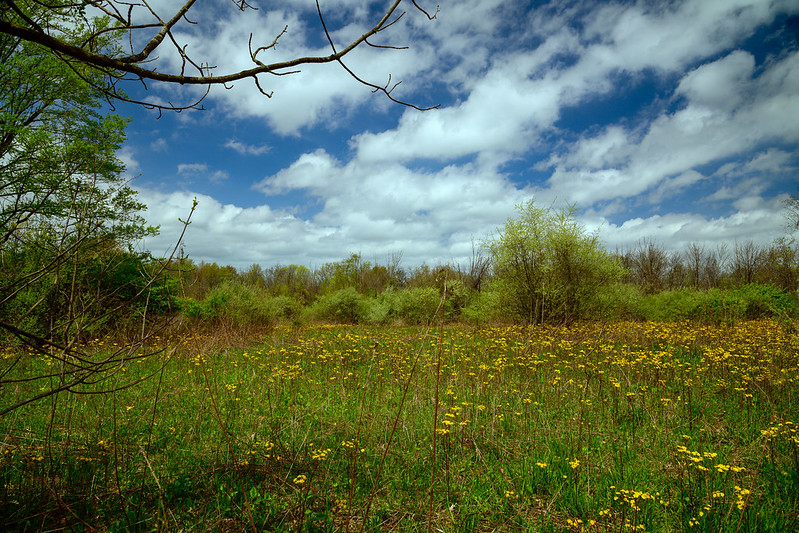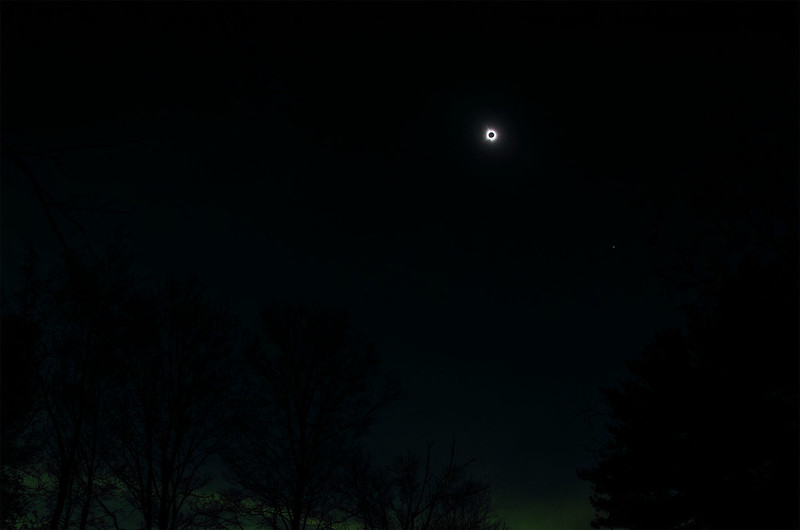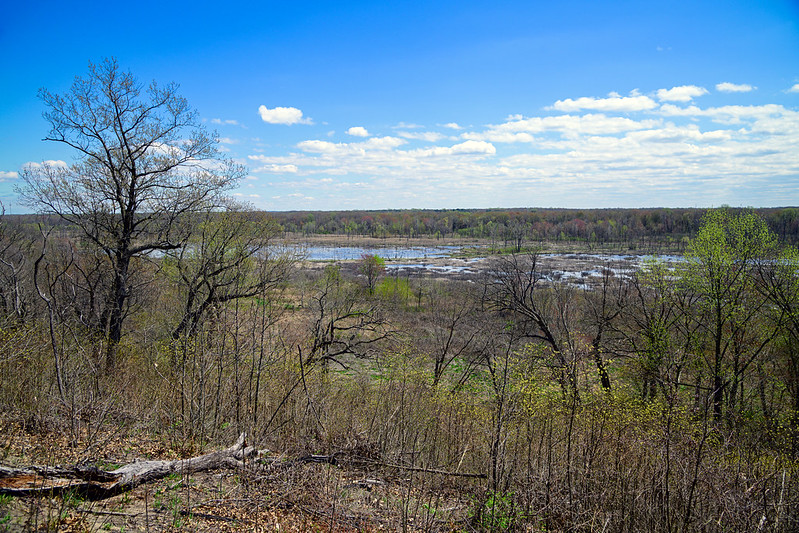
After decades of visiting the Indiana Dunes National Park (and lakeshore prior to 2019), I came across a trail I have not hiked. I don't know how this one was overlooked, but as soon as I realized, I had to check it out.
The Upland Trail in Pinhook Bog is a 2 mile, lollipop trail that travels the highlands next to Pinhook Bog, a quaking bog closed to visitors except during scheduled tours. The term lollipop trail comes from the shape of the trail, a single trail in and out, with a loop at the end, so from overhead, it looks like a lollipop and a stick.
Some of the more interesting features of this trail were the diversity of environment and plant life. From meadows, to woodlands, including stands of beech trees and pines, wetlands, creeks and lakes, a bit of everything.

Some of the more interesting features of this trail were the diversity of environment and plant life. From meadows, to woodlands, including stands of beech trees and pines, wetlands, creeks and lakes, a bit of everything.

The early afternoon sun illuminated the light green buds and yellow flowers in the meadow, against an interesting sky. The yellow spring flowers dotting the meadow are Groundsel or sometimes called Ragwort. The forecast called from clouds and possible rain, but we experienced some beautiful sunny periods when it counted.
For a small and quite remote trail, the Pinhook Bog Upland trail was filled with quite a bit of activity. Aside from the families hiking, quite a few individuals were hiking with hand held baskets- it is Morel mushroom season, and my guess is they're out to find mushrooms in the beech forest. I asked one person carrying an Easter basket if she had any luck finding mushrooms, she replied, "I'm just out for a nice walk." Mmm hmm, a nice walk holding an Easter basket. Of course, picking mushrooms at the national park is illegal, so what else could she have said?














